For authors, landing on a bestseller book list can feel like receiving a fabled Willy Wonka golden ticket; direct access to “the promised land.” In the world of bestseller lists, though, there are no chocolate waterfalls – just millions of readers to be reached.
You’ve likely heard of such lists, including The New York Times Best Seller list, USA Today’s Best-Selling Books, and even Amazon’s top charts. An aura of wonder often surrounds them, leading many authors to scratch their heads and wonder how one even gets on these lists.
We want to break down the mystery behind the most popular bestseller lists, showing you how each one works and how authors can qualify for inclusion.
Before we get started, let’s answer common questions that authors have about bestseller lists:
What makes a book a #1 best-seller?
As you’ll see in our article, each bestseller list has its own unique criteria for being included. We recommend looking into the fine print of each list – like the NYT bestseller list – for their requirements.
Also, it’s worth noting that the type of book you write may change your approach to landing on a bestseller list. Nonfiction bestsellers have different standards for measurement than Fiction books do. For example, Self Help & How-To titles historically have a lower chance of being featured out of any Nonfiction sub-genre.
Why should I get on a bestseller list?
Visibility. Validation. A general sense of having conquered “the beast.” The list goes on.
Ultimately, having claimed a spot on any bestseller list can provide authors with a sense of legitimacy that can be used to drive reader engagement. Many authors include taglines like “USA TODAY bestseller” on their websites or book blurbs to draw attention to their titles.
Can a self published book become a bestseller?
Bestseller lists have historically favored traditionally published titles. However, self-published books can get on bestseller lists. Just ask authors like Andy Weir (of The Martian fame) or E.L. James, who both published independently and were still featured on numerous bestseller lists.
To increase your odds, you’ll want to set your indie book up for success with pristine editing and a best-selling cover. It’s also important to remember that some lists are easier than others to land on. Many say that the NYT bestseller list has the most challenging requirements.
How many books do you need to sell to get on the bestseller list?
According to Vox.com, a good rule of thumb is that you’ll need to sell anywhere from 5,000 to 10,000 books in one week to get on the top bestseller lists. The exact number will differ depending on the publication.
Are you ready to learn more about individual bestseller lists? Below, we explain five of the biggest names – listed in order of easiest to most challenging to get on:
- Amazon
- USA TODAY’s Best-Selling Books
- Indiebound – Indie Bestseller List
- Wall Street Journal Bestselling Books
- The New York Times Best Seller list
1. Amazon
It’s no surprise that Amazon has one of the most popular bestselling book lists for independent authors to appear on. However, you might not know that Amazon has two places a book can be featured: Top Charts and Best Sellers. Top Charts features the top 20 sold and most read books of the week, while the Best Sellers list updates hourly based on sales.
Amazon Charts is divided into the most read and the most sold Fiction and Nonfiction books, with the 20 top titles listed under each header.
The “most read” list ranks books by the average number of daily Kindle reads or Audible listens each week. This explains why you may see older books, such as Harry Potter and the Sorcerer’s Stone, appearing on this list. It’s not a recent bestseller, but it has staying power that carries over into maintained read-through.
On the other hand, the “most sold” list is strictly calculated by copies sold and pre-ordered across Amazon, Audible.com, and related Amazon bookstores.
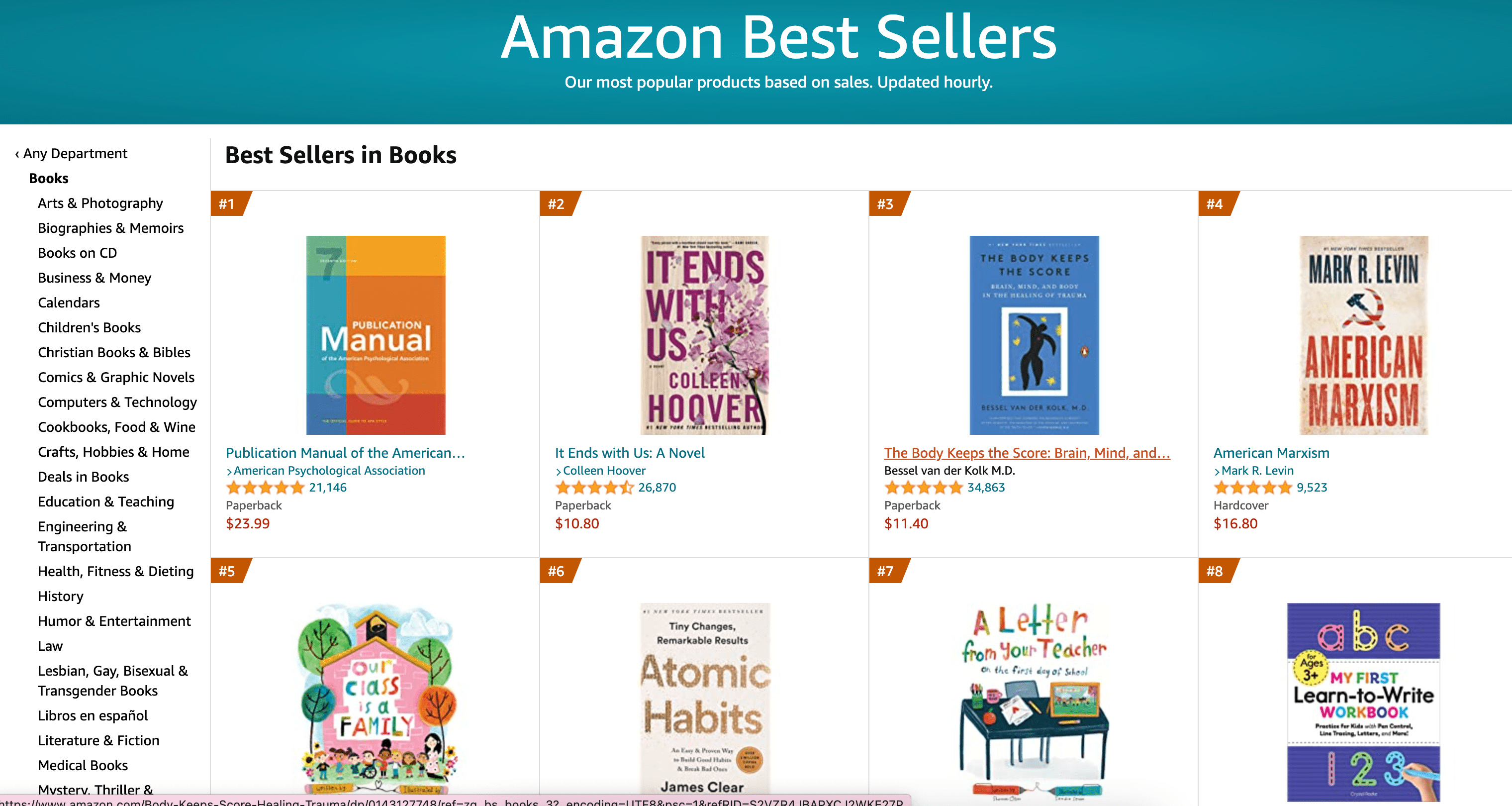
If you’ve ever promoted your book on a site like Freebooksy or Bargain Booksy, you’re likely familiar with the screenshot listed above. The Amazon Best Sellers list unfolds in real time, updating hourly with the best selling books across the entire site. The number of books that need to be sold to appear on the Best Sellers list can vary, with some authors reporting having sold 3,000+ copies in one day to appear in the top 5 spots.
Ultimately, the Best Sellers list is the most approachable option for indie authors. By using promo stacking, you can start climbing the list and gain visibility with new readers. We suggest checking out these five steps to sell more books on Amazon. From there, you can begin picking up the sales traction needed to launch onto more challenging bestseller lists.
2. USA TODAY’s Best-Selling Books
Each week, USA TODAY compiles the 150 bestselling books based on US retailer sales from the previous Monday to Sunday. The first 50 of these books will be printed in USA TODAY’s newspaper on Thursdays, with the entire list appearing on their website.
Since this list takes both print and eBook sales into account, it’s an attractive option for indie authors who maintain a strictly digital catalogue. USA TODAY taps into a variety of retailers for their list, including stores like Apple Books, Target, and Powell’s Books.
How to Get on The USA Today Bestseller List
We recommend approaching USA TODAY’s list with a clearly outlined marketing strategy. Once your book is in top shape, you can set up pre-orders to increase sales and launch your promo stacking plan. From there, understand a few requirements of the list:
- You typically need a minimum of 5,000 copies sold in one week to make an appearance on the list.
- Only US sales will be taken into account.
- Ensure diversity in sales. Don’t just sell on Amazon or Nook, for example.
- Boxed sets are welcome here! If you have a multi-author set, or one written solo, it’s eligible for inclusion.
3. Indiebound – Indie Bestseller List
As the name proves, Indiebound is all about putting independent bookstores front and center by connecting website visitors with local indie shops across the United States. Their bestseller list, similarly, draws upon the well of independent retailers and culls national, regional, and specialty lists two days after the end of the salesweek.
The list is broken down into the following categories:
- Paperback Bestsellers (Fiction & Nonfiction)
- Hardcover Bestsellers (Fiction & Nonfiction)
- Fiction Bestsellers (Hardcover & Paperback)
- Nonfiction Bestsellers (Hardcover & Paperback)
- Children’s Bestsellers (Hardcover & Paperback)
- Middle Grade & Young Adult
There are a few reasons why breaking onto the Indiebound bestseller list will be different from others of its kind. For example, independent bookstores report their bestsellers directly to the Indie Bestseller List. As such, it’s challenging to tie an exact number of sales to securing a featured spot. In order to make the list, you’ll need to ensure that your book is carried by the specific stores that report to the list. You can find relevant bookstores near you at this link.
4. Wall Street Journal Bestselling Books
Similar to the New York Time Best Seller list is The Wall Street Journal’s selection. Each week, The WSJ publishes their bestselling books. Unfortunately, this list is hidden behind a paywall. You’ll need to be subscribed to a WSJ membership in order to check out their list online, or read it in their newspaper.
The Wall Street Journal bestselling list depends on NPD BookScan to gather comprehensive sales tracking. NPD BookScan features a variety of sales from stores like Walmart, Barnes and Noble, and Amazon to ensure it’s reaching many types of readers.
How do you get on the Wall Street Journal bestseller list?
Interested in appearing on this list? Here are a few suggestions for raising the odds:
- Professionalism is the name of the game. Since the Wall Street Journal’s list includes a variety of stores in its reporting, the odds of indie authors being featured is increased. Make sure there are no features in your book (like shoddy editing) that could hold you back from high sales.
- Set up pre-orders. Appearing on the Wall Street Journal bestseller list is going to be hard. A good rule of thumb is that you’ll need to sell between 4,000 and 10,000 copies of your book in one week to be eligible. Launching a pre-order strategy can help build excitement around your book, leading to increased sales.
- Continue to diversify. Similar to other lists, your book sales shouldn’t be coming from just one retailer.
If you’re interested in a step-by-step marketing plan unique to the Wall Street Journal bestselling books list, the Best Selling Author Program has a helpful how-to guide.
5. The New York Times Best Seller list
The New York Times Best Seller list is synonymous with success for many authors. Split into a variety of categories (fiction, nonfiction, children’s, and monthly), each list has a designated number of slots to be filled. For example, the Paperback Trade Fiction list fits 15 titles. Aside from the monthly lists, all others are updated at a weekly cadence.
Launched in 1931, the NYT bestseller list is the most well-known of its kind. It’s also the hardest to be featured on. It’s recommended you come through a traditional publisher to have your best chance for inclusion.
You may be wondering who curates this list – and how decisions are made as to what books get selected. The NYT list selects books that are selling fast at particular bookstores and online shops in the US. Their method of selecting books has been hotly contested throughout the years, with one author going so far as to sue the publication for being excluded.
How do you get on the New York Times bestseller list?
While there are always exceptions to rules, here’s the truth: the NYT bestseller list is very hard to end up on. You should anticipate selling around 10,000 books in one week to be sure of your chances.
While there is no clear criteria for being disqualified from the list, you may run into a few roadblocks if:
-
- You’re an indie author with a smaller following. As we mentioned, you have a much higher chance of getting on this list if you’re published traditionally. There are other bestseller lists mentioned in this article that will appeal to indie authors.
- Your book doesn’t sell enough copies. Selling 10,000 copies of a book in one week may feel unimaginable. Some qualities (like an unprofessional cover, poor reviews online, or writing errors) won’t help push sales, so your book will need to be in the best shape possible.
- All your sales come from one place. Book sales need to come from a variety of retailers. Having 10,000 copies come from your personal website, for example, will flag that an author may be attempting to game the system. It’s been done before!
While there are no guarantees for being featured on any bestseller list, snagging a spot can be life changing. Certain lists, such as NYT’s, have such high reputations that they can catapult featured books to new heights.
Ultimately, it’s worth checking in with yourself and understanding exactly why you want to be featured on these lists. Is it for fame? Fortune? Simply to reach more readers? Whatever the reason, you’ll need a strategy to get there. Like we said, promo stacking as a means to work your way up the ranks can be beneficial.
If you’ve been featured on a bestseller list and have advice for how to get there, we want to hear from you in the comments below. Happy writing!

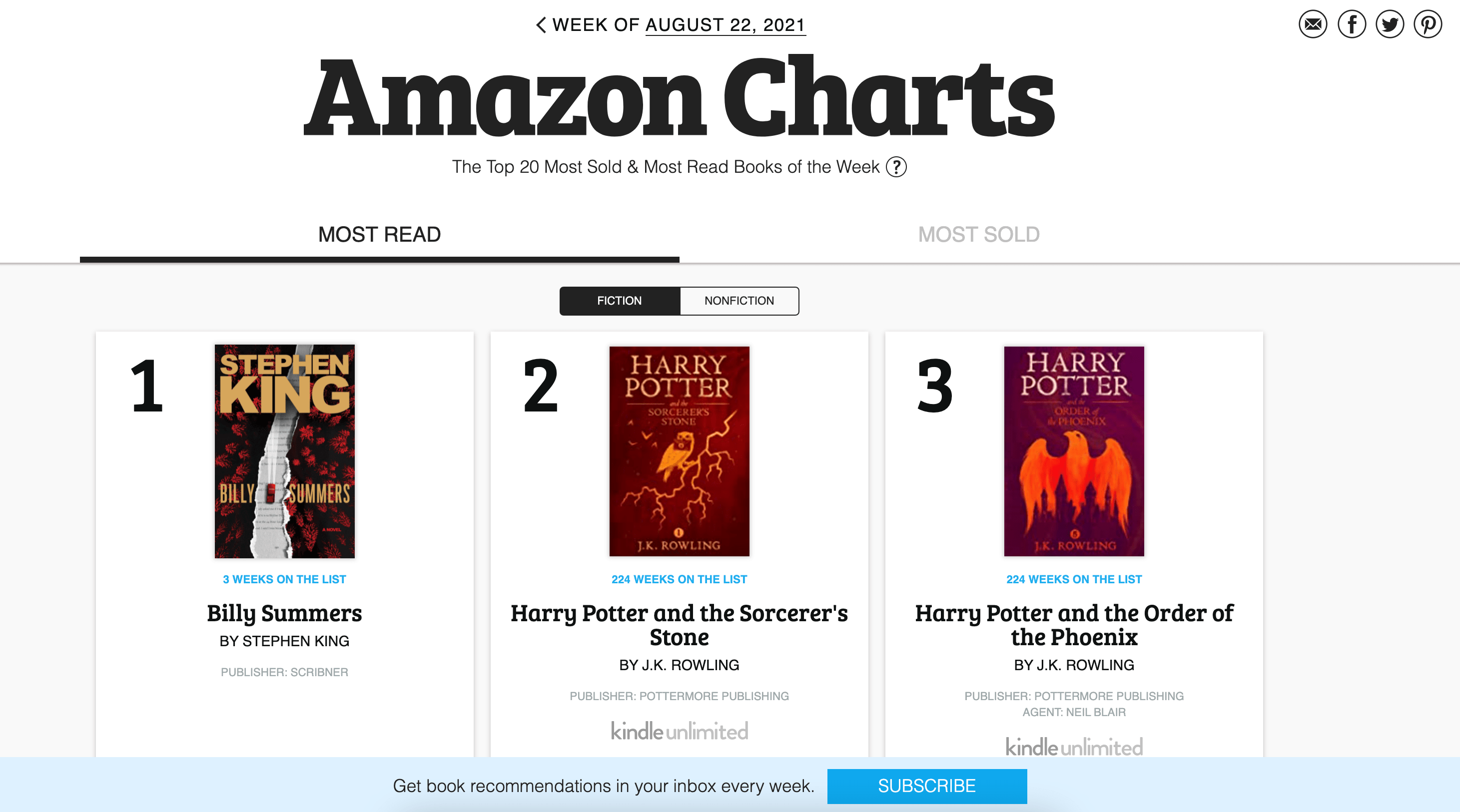
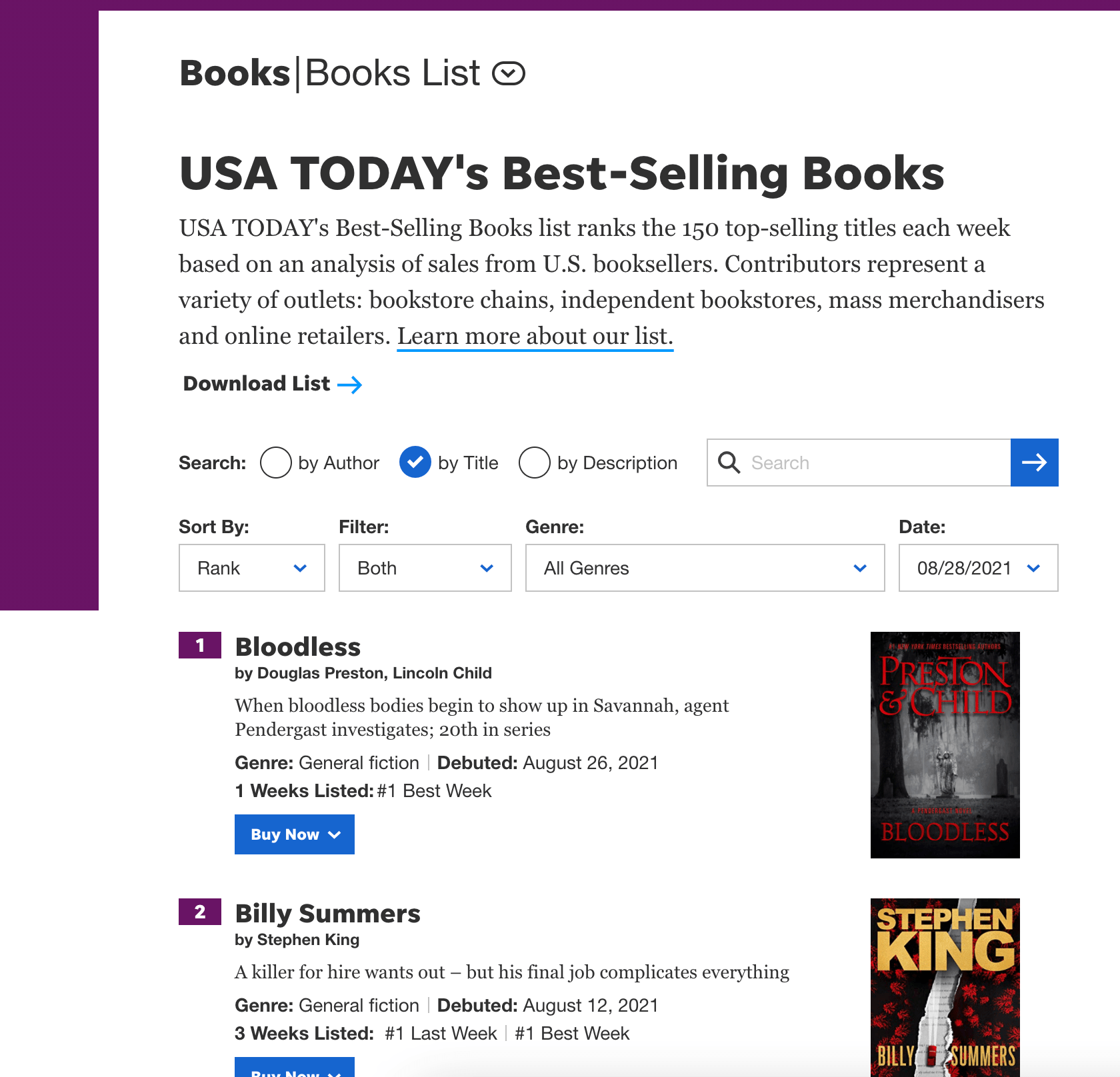
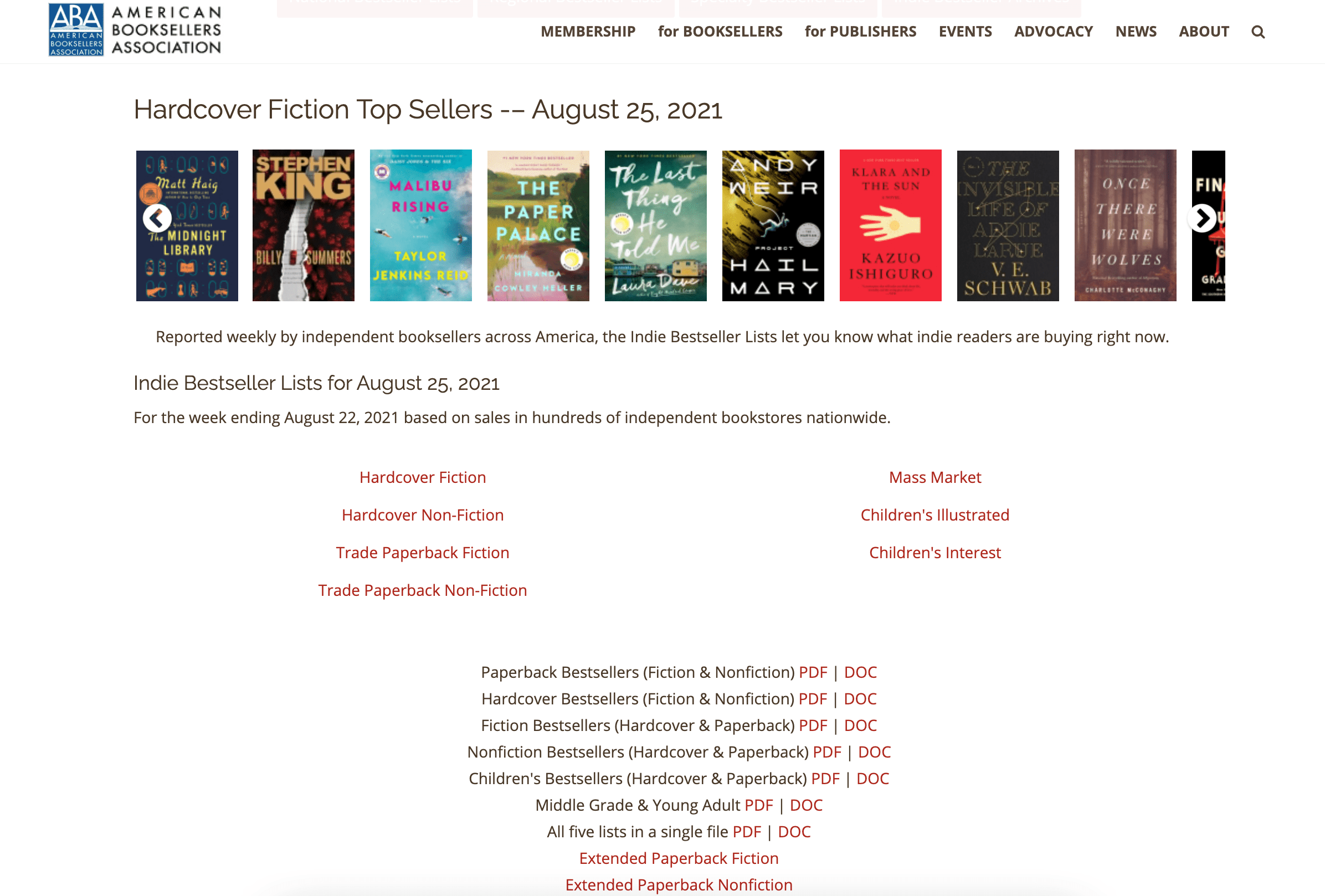
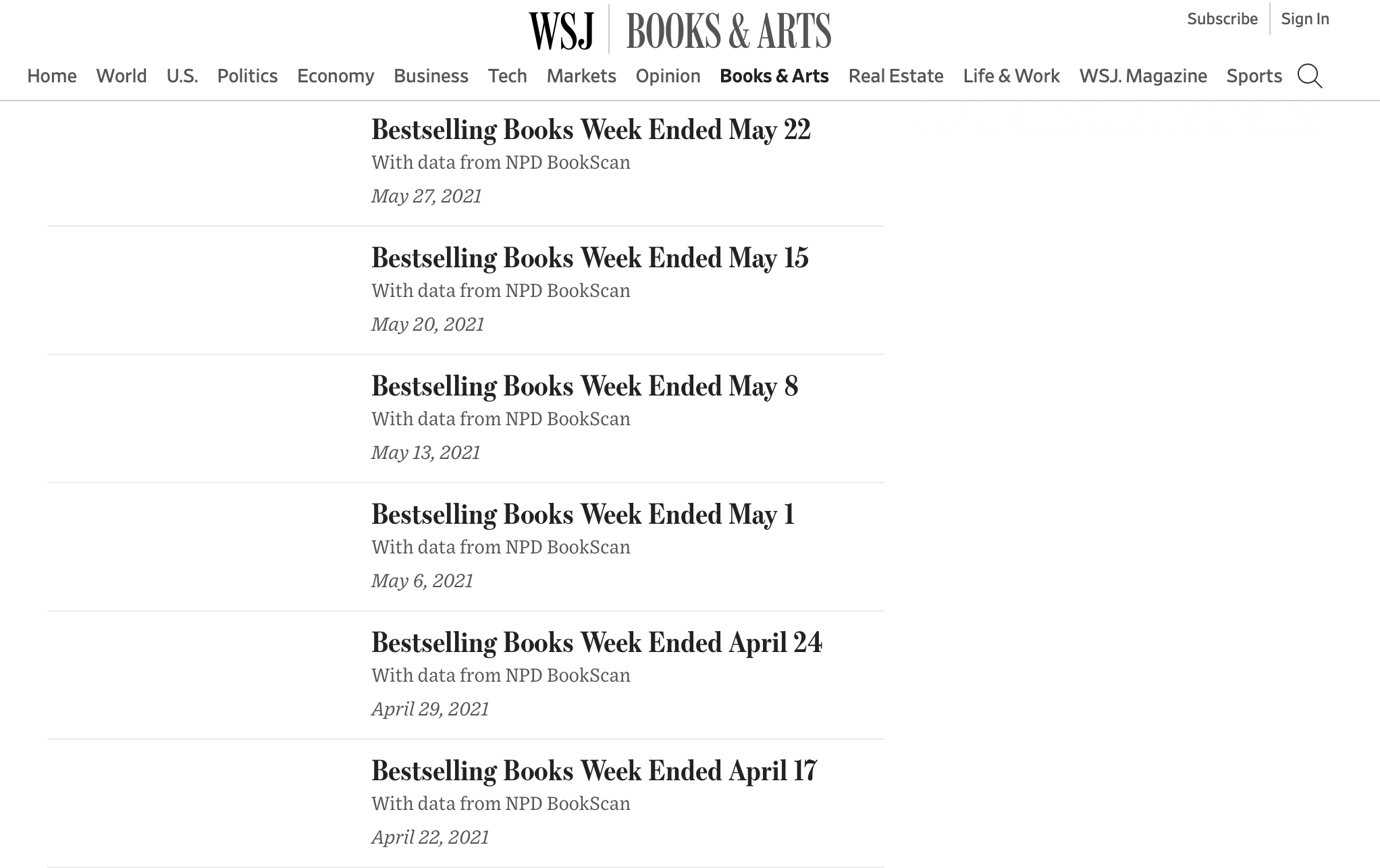
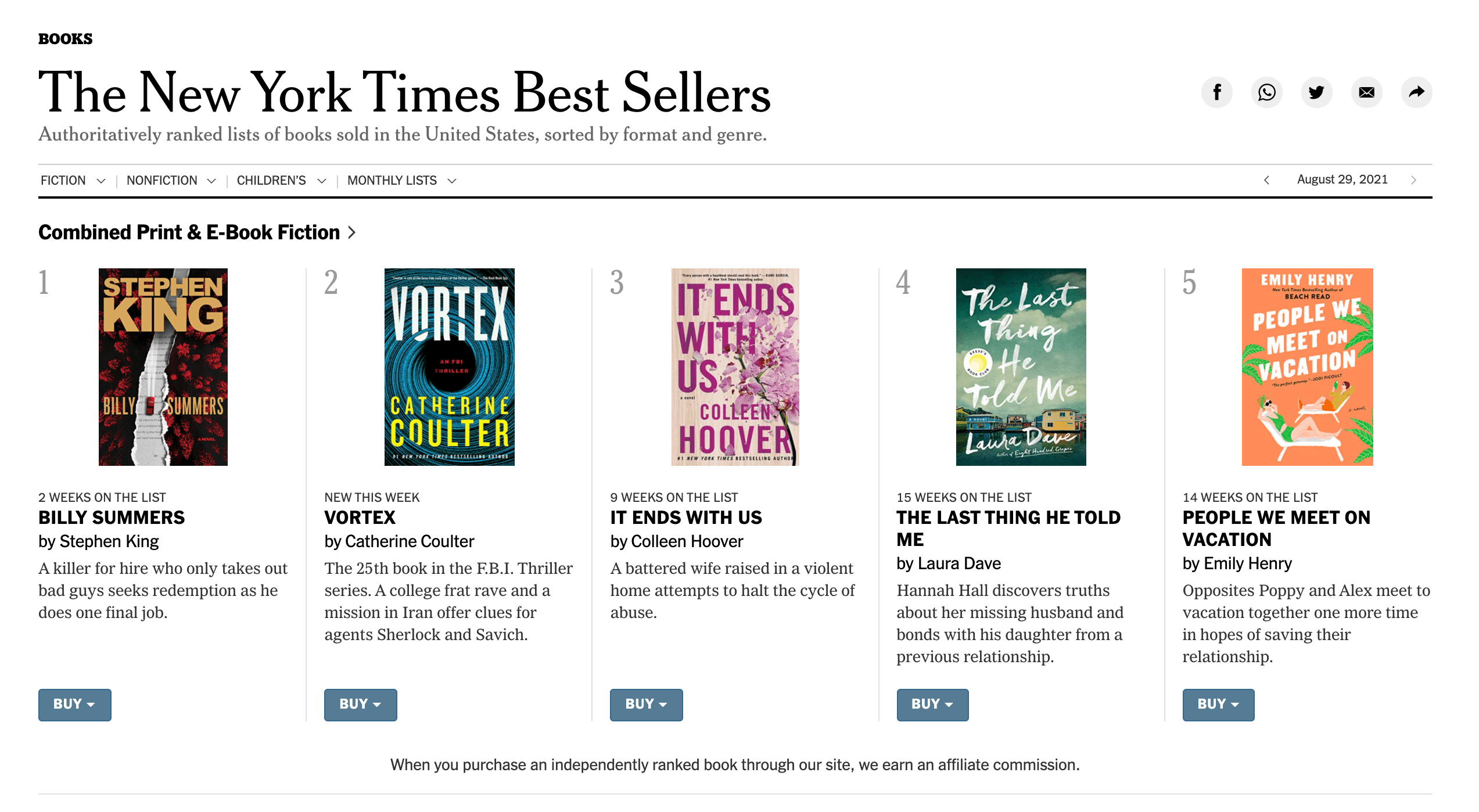
With regard to Best-Seller lists and the WSJ and NYT lists in particular: This article stresses good editing as being essential, as well as a “professional” cover. (Something I think should be obvious, of course)
Can someone please explain how so many badly-written and packaged books make it into these lists?
Is there some sort of a “Boys’ (or girls’) Club” situation here?
There are some authors who are magnificent at self-promotion and brilliant at attracting and keeping followers. They also pen stories that please a wide range of readers. They have the golden touch. They attract and keep loyal readers.
My book A Woman Undefeated was a best seller last November on the Amazon Canada list. It was number 3, next to Ken Follett and I was over the moon. I attribute its success to my publisher giving the e-book lots of publicity, as my other books which are self published have only ever got to the low thousands.
Congratulations on your success!! That is a wonderful accomplishment!
Personally I posted all my stuff for free to get a following before I released my first book. I’ve found many people have supported me because of that reason.
It’s been at least 6 months and I have already sold two copies of my book Denham Hall. Tamsin made her parents buy a copy and the other one, well Tamsin’s mother’s friend, Mrs Fellows said she found a copy in a rubbish bin next to the bus stop, you know the bus stop outside Rickmansworth train station….in front of the newsagents.
You would think people would pass a book on for other readers to enjoy. Anyway, the couple of quid royalties won’t go astray.
My book A Woman Undefeated was a best seller last November on the Amazon Canada list. It was number 3, next to Ken Follett and I was over the moon. I attribute its success to my publisher giving the e-book lots of publicity, as my other books which are self published have only ever got to the low thousands.
How does a self published aithor get into retail stores that track the sales numbers? I wrote a wonderful book which I sold over 5000 copies of in a year mainly at book signings and powpows in the American Indian community. It is a good book and I have fans waiting for the second book. But I will tell you, without a mainstream publisher, YouR BOOK WILL NOT BE LOOKED AT BY CHAIN BOOKSTORE BUYERS no matter how well written or good it is. If I am wrong please tell me even one way open to self published books.
N’ahwah.
Thank you
Launching a pre-order strategy can help build excitement around your book, leading to increased sales.
What a fantastic read! Your unique perspective on this topic is so refreshing. Keep it up!